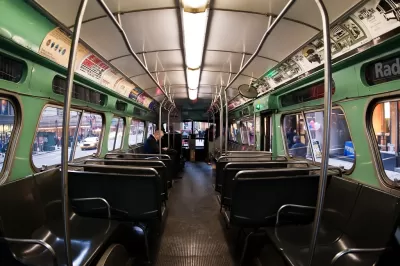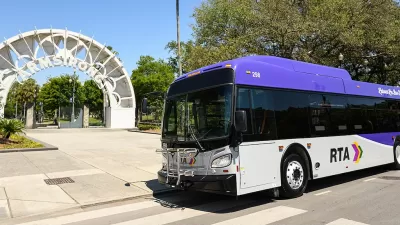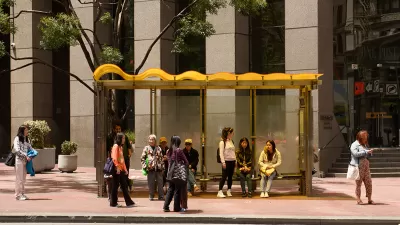Although federal transit funding is traditionally reserved for capital improvement and infrastructure projects, advocates argue that funding improved service could have transformative impacts on transit-dependent communities.

In a blog post, TransitCenter, a New York-based transit advocacy organization, joins other transit advocates in a call to making public transit funding a federal priority long after pandemic-related emergency measures are lifted. COVID-19 only served to highlight existing gaps in transit service and the stark inequities faced by transit users. "[A]fter the pandemic recedes, a federal program to support transit service could yield immense dividends," the blog notes.
"In most American cities, the fundamental shortcoming of transit is its sheer scarcity." Allowing "transit agencies to spend federal funds to run buses and trains" after the pandemic, while "a break with longstanding policy," is "the fastest way to deliver better transit networks, improve the experience of current riders, and increase ridership" through increased service.
TransitCenter offers an analysis of the projected effects of a $20 billion investment in transit service nationwide, which, according to an analysis by the Urban Institute, could "be more than enough to bring transit service in every U.S. urban area up to the level in the Chicago region." Such a program, TransitCenter argues, could yield immense benefits for transit riders. "Instead of cutting people off from opportunity, condemning households to struggle with high transportation costs, and overheating the planet, our transportation systems can advance economic fairness, racial equity, and climate action."
FULL STORY: Envisioning a Federal Program to Increase Transit Service

Manufactured Crisis: Losing the Nation’s Largest Source of Unsubsidized Affordable Housing
Manufactured housing communities have long been an affordable housing option for millions of people living in the U.S., but that affordability is disappearing rapidly. How did we get here?

Americans May Be Stuck — But Why?
Americans are moving a lot less than they once did, and that is a problem. While Yoni Applebaum, in his highly-publicized article Stuck, gets the reasons badly wrong, it's still important to ask: why are we moving so much less than before?

Research Shows More Roads = More Driving
A national study shows, once again, that increasing road supply induces additional vehicle travel, particularly over the long run.

Concrete to Community: A Schoolyard Makeover in West Philly
With guidance from the Trust for Public Land, third graders at Overbrook Elementary are leading the redesign of their asphalt schoolyard into a vibrant green space, learning valuable skills and creating lasting community impact in the process.

Which US Rail Agencies Are Buying Zero-Emissions Trains?
U.S. rail agencies are slowly making the shift to zero-emissions trains, which can travel longer distances without refueling and reduce air pollution.

San Diego School District Approves Affordable Housing Plan
The district plans to build workforce housing for 10 percent of its employees in the next decade and explore other ways to contribute to housing development.
Urban Design for Planners 1: Software Tools
This six-course series explores essential urban design concepts using open source software and equips planners with the tools they need to participate fully in the urban design process.
Planning for Universal Design
Learn the tools for implementing Universal Design in planning regulations.
City of Moreno Valley
Institute for Housing and Urban Development Studies (IHS)
City of Grandview
Harvard GSD Executive Education
NYU Wagner Graduate School of Public Service
City of Cambridge, Maryland
Newport County Development Council: Connect Greater Newport





























